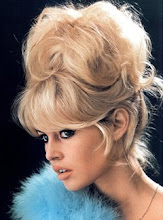I Cloned Dolly

This is another contribution to my new blog series. It is a review by Karla Griffin of show that was recently shown at the Gordon Snelgrove Gallery in Saskatoon.
I Cloned Dolly
Aaron Godard
Reviewed by Karla Griffin
The title of Aaron Godard’s Bachelor of Fine Arts graduating exhibition I Cloned Dolly, is a cheeky pun that points to the 1996 birth of Dolly the sheep; the first mammal to have been successfully cloned from an adult cell. The sheep’s birth was touted as the most significant scientific breakthrough of that decade, although it raised controversial ethical concerns not only within the scientific community, but within the general public.
The reproduction of multiples from the same genetic source acts as the catalyst for Godard’s latest body of work. Like a production line efficiently producing identical manufactured goods based on a single prototype, Godard acts as the solitary manufacturer, or creator, of a mass-produced standardised dolly. Using a dolly from Home Depot that he purchased and then returned for the project, Godard explores the possibilities of accessible and seemingly banal objects, by imbuing them with complicated layers of social understanding.
Entering the gallery, viewers are greeted by what appears to be an abandoned warehouse, or broken down production facility. Dollies in varying states of completion stand alone while others seem to huddle in groups. A closer examination of the dollies, viewers are left to question what kind of manufacturing has occurred in order to produce the results that stand before them. Half formed, misshaped tires, drooping handles, incorrect proportions and missing parts, Godard’s dollies lie in the realm of science experiment gone terribly wrong, which suggests that science, like everything else, is fallible.
Through excessive repetition and incessant labour, Godard reveals a kind of Frankenstein-like love for his malformed creations. Using the dolly as a point of departure and working on a 1:1 scale of representation, he anthropomorphises these objects through the mutable possibilities of material - bringing to mind Claes Oldenburg’s soft sculptures of the 1960s and 1970s, and the more recent foam installations of Chris Hanson and Hendrika Sonnenberg.
Like Oldenberg, Hanson and Sonnenberg, Godard’s pieces are all handmade, and the work suggests a kind of satisfaction with the handmade process. Using pink (Pepto-Bismol pink) extruded polystyrene foam, each dolly is meticulously carved and every detail has been acknowledged: from the grips on the handles to the tread of each tire. Inspecting the workmanship, small glitches and idiosyncrasies mark these pieces as handmade one of a kind objects; each one is unique from the next.
Taking into account that Godard has individually carved more than twenty versions of one object, in what appears to be a quest to render the perfect specimen; the fragile and flimsy quality of the polystyrene foam contradicts the solid functionality of the original manufactured dolly. However, more than that, Godard’s installation suggests not only the fragility of his art objects, but possibly the fragility of life: the fine balance between nature and science, where the pursuit of knowledge becomes the creation of monsters. Like Victor Frankenstein, from Mary Shelley’s classic novel Frankenstein, Godard has “collected the instruments of life around [him], that [he] might infuse a spark of being into the lifeless thing that lay at [his] feet.”
“I Cloned Dolly,” was exhibited at the Gordon Snelgrove Gallery at the University of Saskatchewan from March 16 to March 20, 2009.
Labels: Art by my friends


0 Comments:
Post a Comment
Subscribe to Post Comments [Atom]
<< Home